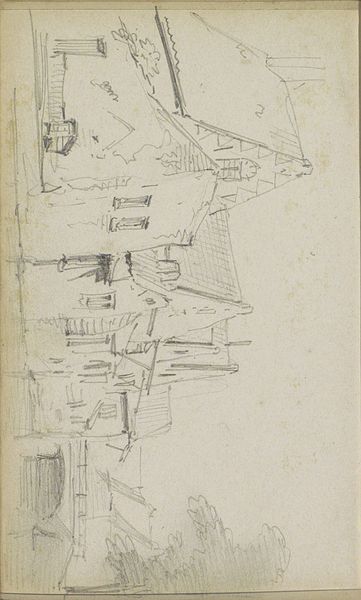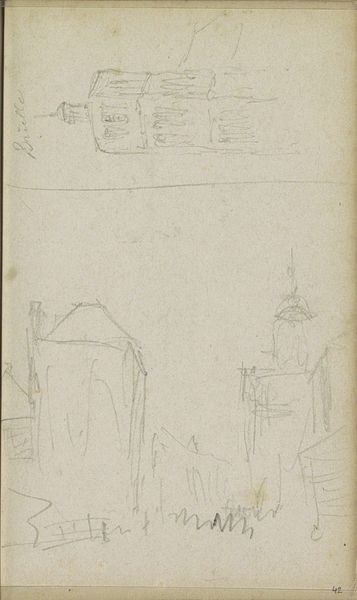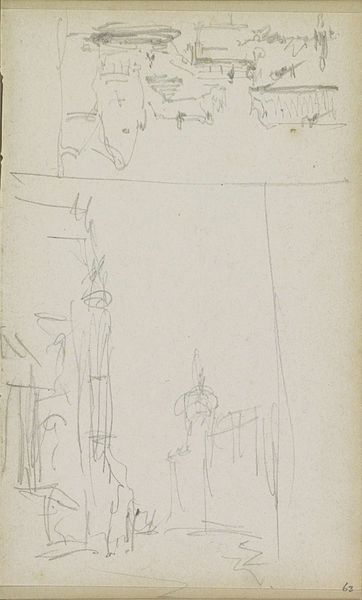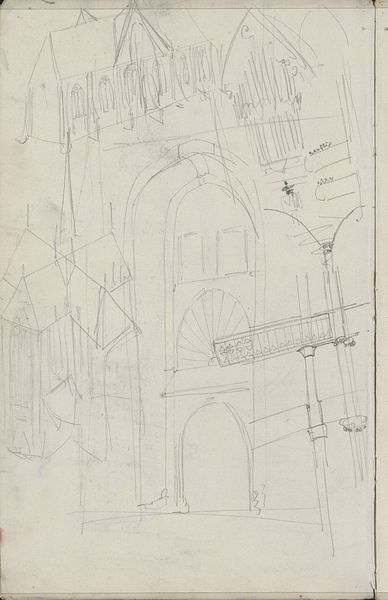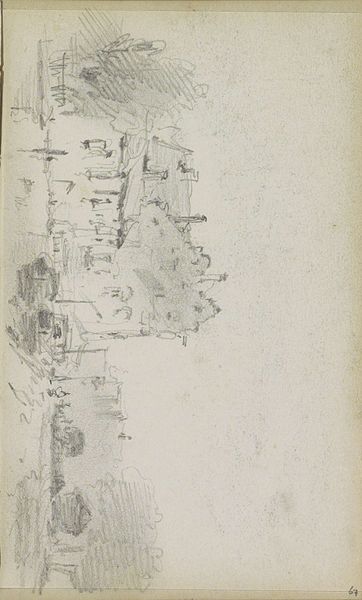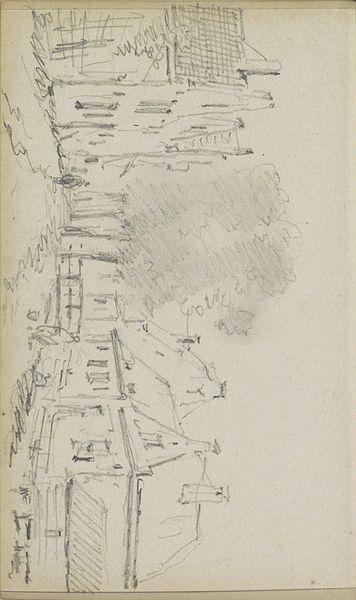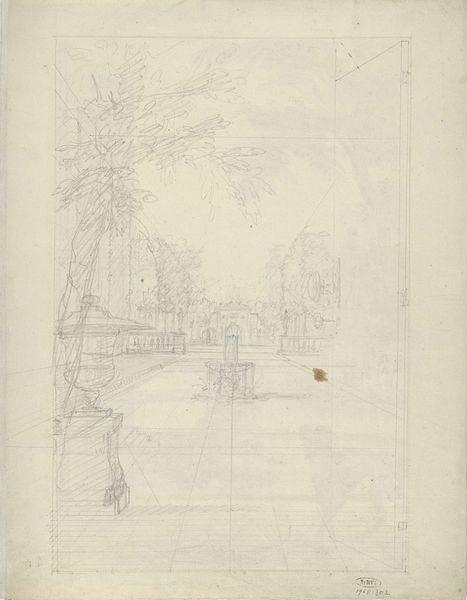
drawing, paper, pencil
#
drawing
#
amateur sketch
#
aged paper
#
toned paper
#
light pencil work
#
incomplete sketchy
#
landscape
#
paper
#
personal sketchbook
#
ink drawing experimentation
#
pen-ink sketch
#
pencil
#
sketchbook drawing
#
cityscape
#
sketchbook art
#
realism
Copyright: Rijks Museum: Open Domain
Editor: So, this is "Stadsgezicht met een kerk," or "Cityscape with a Church," by Adrianus Eversen, dating somewhere between 1828 and 1897. It's a pencil drawing on paper. I find it really quiet, almost ghostly. What do you see in this piece? Curator: Quiet is a good word for it. These quick pencil sketches, like half-formed memories, allow us to see how Eversen processed the world around him. Do you notice the skeletal structure of the church dominating the sketch? Editor: Yes, it's definitely the focal point, even though it's unfinished. The lines are so light, it almost feels like it could disappear at any moment. Curator: Consider the church itself as a symbol. What does a church signify within a 19th-century Dutch cityscape? It's not merely a building, it's a cultural anchor, representing community, faith, and even societal stability. Do you see how even in its incompleteness, that symbolic weight is palpable? Editor: I hadn't thought about the symbolism so directly. So, even in a rough sketch, the cultural importance of the church is still present? Curator: Absolutely. The incomplete nature might even suggest a society in transition, but the persistence of the church form speaks to enduring values. The ephemeral quality of the pencil lines reflects the transient nature of life against this backdrop of historical and spiritual continuity. What feelings arise when you look at the work with this interpretation? Editor: That's a much richer reading than I had initially. I now appreciate the sketch’s layers and that there is so much going on beneath what looks like a simple cityscape study. Curator: Indeed. These sketches remind us that art is not just about what is depicted but how the depiction resonates with our cultural understanding and shared memory. The dialogue between the fleeting and the enduring becomes quite powerful here.
Comments
No comments
Be the first to comment and join the conversation on the ultimate creative platform.

